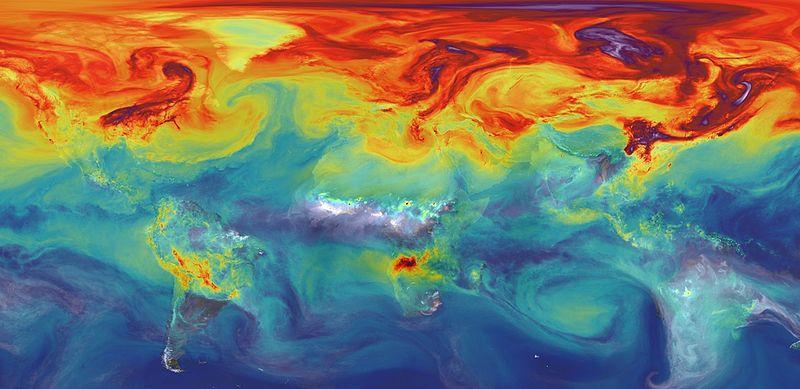The Environmental Protection Authority – which works with other government agencies to implement the Emissions Trading Scheme – has geared up to do its work during the COVIND-19 lockdown.
The ETS is the Government’s main tool for meeting domestic and international climate change targets. It aims to encourage people to reduce greenhouse gas emissions by putting a price on greenhouse gas emissions.
One emission unit, the New Zealand Unit, represents one metric tonne of carbon dioxide or carbon dioxide equivalent (ie, the amount of another greenhouse gas that does as much damage as one tonne of carbon dioxide).
The Government gives eligible foresters units for carbon dioxide that is absorbed by their trees. The foresters can sell these units on the NZ ETS market. Businesses with surrender obligations (legal obligations to hand over units) must purchase enough units to cover their emissions. These units are then surrendered to the Government.
For example, a business emitting 2,000 tonnes of greenhouse gases would need to purchase 2,000 emission units on the NZ ETS market. If the emitter reduced their emissions by 500 tonnes of greenhouse gases they would only need to purchase and surrender 1,500 units.
All sectors of the economy must report to the Government on their annual greenhouse gas emissions. These sectors are: forestry, agriculture, waste, synthetic gases, industrial processes (including manufacturers of iron and steel), liquid fossil fuels (including petrol and diesel suppliers), and stationary energy (such as electricity generation and industrial heating).
All sectors apart from agriculture have surrender obligations as well as reporting obligations. Just over 50% of New Zealand’s greenhouse gas emissions are covered by surrender obligations.
The agriculture sector was responsible for around 48% of emissions in 2017. The Government is consulting on options to reduce agricultural emissions.
The Environmental Protection Authority manages the administration of the ETS including compliance, reporting and market information and operates the New Zealand Emissions Trading Register.
Today it advised it understands this is a difficult time for many organisations and it wants to do everything it can to help make it easier for NZ ETS participants to meet their obligations within the scheme over the coming weeks.
It says:
Although we have reduced capacity due to our staff working from home, please get in contact with us so that we can help you to meet your NZ ETS obligations.
Emissions returns are due by 31 March 2020 for all Schedule 3 mandatory activities, and any schedule 4 voluntary activities that report on a quarterly basis (excluding Post-1989 Forestry activities).
31 March remains the deadlines for these submissions and most organisations have already submitted their returns to us. We have already tried to make contact with the participants that have not yet submitted a return to see what we can do to help them with their return.
Applications can be made for an extension either by logging into the register and applying for an extension, or by emailing emissionstrading@epa.govt.nz before the end of 31 March.
Other agencies involved in the administration of the ETS are:
-
- The Ministry for the Environment, responsible for leading the development, coordination and implementation of ‘whole-of-government’ climate change policy, which includes managing policy development for the ETS.
- The Ministry for Primary Industries, which administers the ETS for forestry and provides information about agriculture under the scheme. The ministry also contributes to government policy on climate change, including policy development and implementation of the ETS.
- New Zealand Customs Service, which administers part of the synthetic greenhouse gas provisions of the Climate Change Response Act. It administers the Synthetic Greenhouse Gas Levy for the quantity of greenhouse gases inside imported goods (excluding vehicles).
- The New Zealand Transport Agency, which administers part of the synthetic greenhouse gas provisions of the Climate Change Response Act. NZTA administers the Synthetic Greenhouse Gas levy for the quantity of greenhouse gases inside imported vehicles.
The EPA has several responsibilities.
Industrial allocations: it allocates emission units to emissions-intensive and trade-exposed industries.
Emissions reporting and surrender: those who carry out mandatory and voluntary non-forestry activities under the ETS must report their emissions to the EPA annually. Its job is to make sure everyone with mandatory obligations has signed up to the scheme, and ensure that all participants report their emissions accurately and meet their surrender obligations on time.
The register: it operates the New Zealand Emission Trading Register (the register), and thereby manages users, accounts and other transactional aspects of the ETS.
Entitlements for removal activities: those who carry out non-forestry activities that remove carbon from the atmosphere, such as producing products that embed carbon, or exporting synthetic greenhouse gases from New Zealand, can submit returns to the EPA on a quarterly basis to receive emission units. Its job is to make sure people are given the right number of units to account for their activities.
Levy on importing synthetic greenhouse gases (SGGs): importers of vehicles and other goods that contain SGGs pay a levy for the quantity of gas imported in their products. It does not administer those levies but it is responsible for monitoring compliance with the levies.
Delegated forestry functions: while the majority of forestry related functions are administered by the Ministry for Primary Industries, the EPA is responsible for managing accounts, and processing unit surrenders and entitlements for forestry participants and allocation recipients in the register. It also assesses penalty decisions for late or missed surrenders and repayments.












